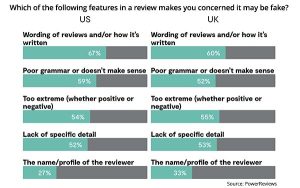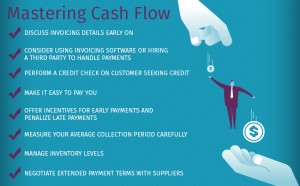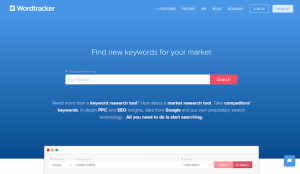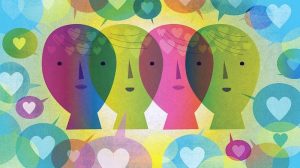
Customer centricity is the idea that organizations should not only serve their customers, but also get “close to them” — understand what they value, deliver exceptional experiences and memories, and work to build relationships.
In a 2011 article in Fast Company, author Brian Solis wrote:
“It’s not just about communicating with customers, it’s about showing them that listening translates into action within the organization to create better products and services and also foster valuable brand experiences and ultimately relationships with customers. It’s about empowering employees to improve those experiences and relationships in the front line and to recognize and reward their ability to contribute to a new era of customer engagement and collaboration.”
This concept is different from traditional approaches to customer satisfaction (CSAT) scoring, and it shows how we need to change how we look at measuring the customer experience. When customers are represented by scores in a spreadsheet or dashboard, it can be all too easy to detach from the visceral experience customers receive when they buy. Those experiences are delivered or indirectly impacted by employees all across your organization, of whom 71 percent are currently not engaged with their work, according to Gallup.
Another study showed 78 percent of customers have bailed on a transaction because of a poor service experience. There is an additional cost to loyalty from those who have unremarkable service experiences with employees who feel indifferent toward their work. And it’s no secret it costs up to 6-7x as much to acquire a new customer than to keep an existing one.
While every organization is at a different place with varying employee engagement scores and CSAT scores — most organizations have a significant disconnect in the perception of customer experience. In one study, 80 percent of companies claimed they deliver great customer service, but only 8 percent of customers agreed.
Among the first steps to improving customer satisfaction is addressing employee engagement. Employees who are personally invested in their work deliver better experiences to customers, who then return higher satisfaction, loyalty, and lifetime spend.
How to Deploy a Holistic Employee Engagement Strategy to Achieve Your Customer Experience Goals
A recent Forrester Research study showed 79 percent of organizations don’t connect formal reward structures to performance on customer experience (CX) metrics. Most companies aren’t quite sure how to go about aligning employee incentives and rewards with customer outcomes.
If you are ready to set goals for your customer experience, begin with the end in mind. What do you want to accomplish? What strategic objectives do you have for the next year? With that foundation, consider drafting goals in the following three areas:
- Customer Experience-Oriented — Specifically target aspects of the customer experience. For example: Aim to improve an aspect of or the overall customer experience and respond to and alleviate negative experiences.
- Employee Engagement-Oriented — Build a culture of customer centricity. For example: Raise awareness and sensitivity to the customer experience and connect employees to strategic objectives.
- Organizational Objectives & Key Results (OKRs) — For example: Improve customer retention and increase upsell and renewal rates.
With your goals in mind, begin connecting those goals with the specific behaviors your employees.
8 Tips for Connecting Customer Satisfaction Goals and Employee Engagement
No. 1 — Connect Your Employees: When you focus on connecting employees to customer-centric and organizational objectives, ask how your employees can help you accomplish these goals. How will you observe, track, and measure those activities? Employees should consistently demonstrate the behaviors that support a positive customer experience. For example: Encourage employees to engage in positive and open dialogue by asking if a customer is satisfied with a resolution.
No. 2 — Provide Feedback: Employees should be able to consistently provide feedback to their leadership that will improve the customer experience. For example: Employees can identify environmental issues negatively impacting a customer experience or submit ideas to improve processes.
No. 3 — Improve Knowledge: Employees should know enough about products and services to support any customer needs. For example: Support employee participation in product or prescribed online training courses.
No. 4 — Show Responsiveness: Employees should have the awareness, tools and autonomy to respond proactively to negative feedback. For example: Employees can anticipate client needs and deliver solutions or proactively provide alternative choices and opportunities.
No. 5 — Praise Progress: Employees should identify and praise positive feedback or overall satisfaction improvement. For example: Managers and peers should be able to efficiently recognize employees who demonstrate behaviors that positively influence the customer experience.
No. 6 — Extend Learning into Daily Work: Provide training on values-based behaviors and educate on customer experience optimization processes and practices. Reinforce and praise newly learned and demonstrated behaviors.
No. 7 — Improve Proactive Response Processes: Define methods for employee-enabled interventions in the customer experience. Establish and refine case management processes based on customer feedback and clarify steps needed to resolve. Build processes to reward employees for outstanding feedback.
No. 8 — Provide a Channel for Praise and Reward Progress: Recognize employees when they appropriately demonstrate customer-centric behaviors. Communicate positive customer feedback to its source and establish reward programs for progress and achievements related to the customer experience over time.
Business & Finance Articles on Business 2 Community(47)
Report Post








